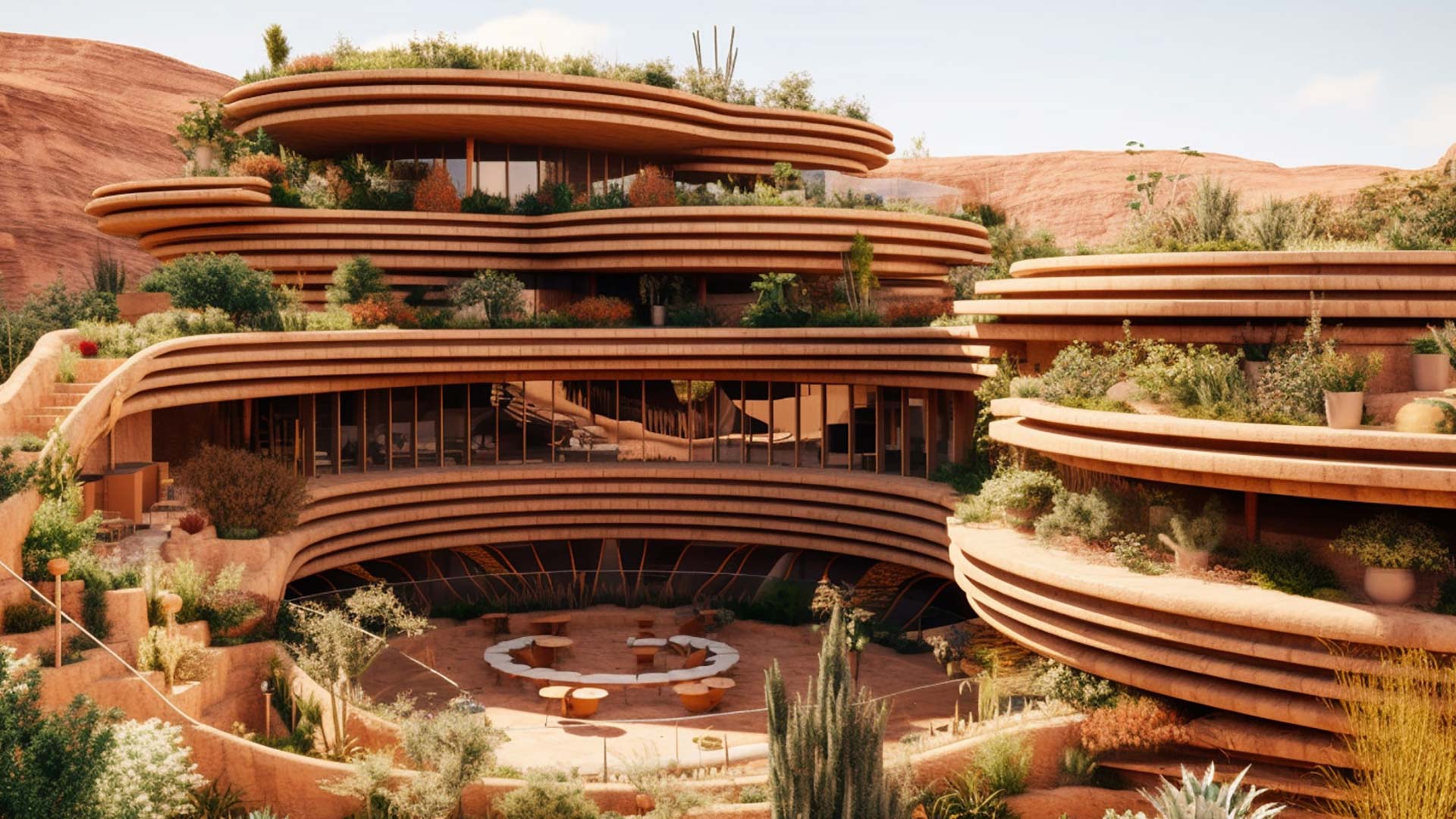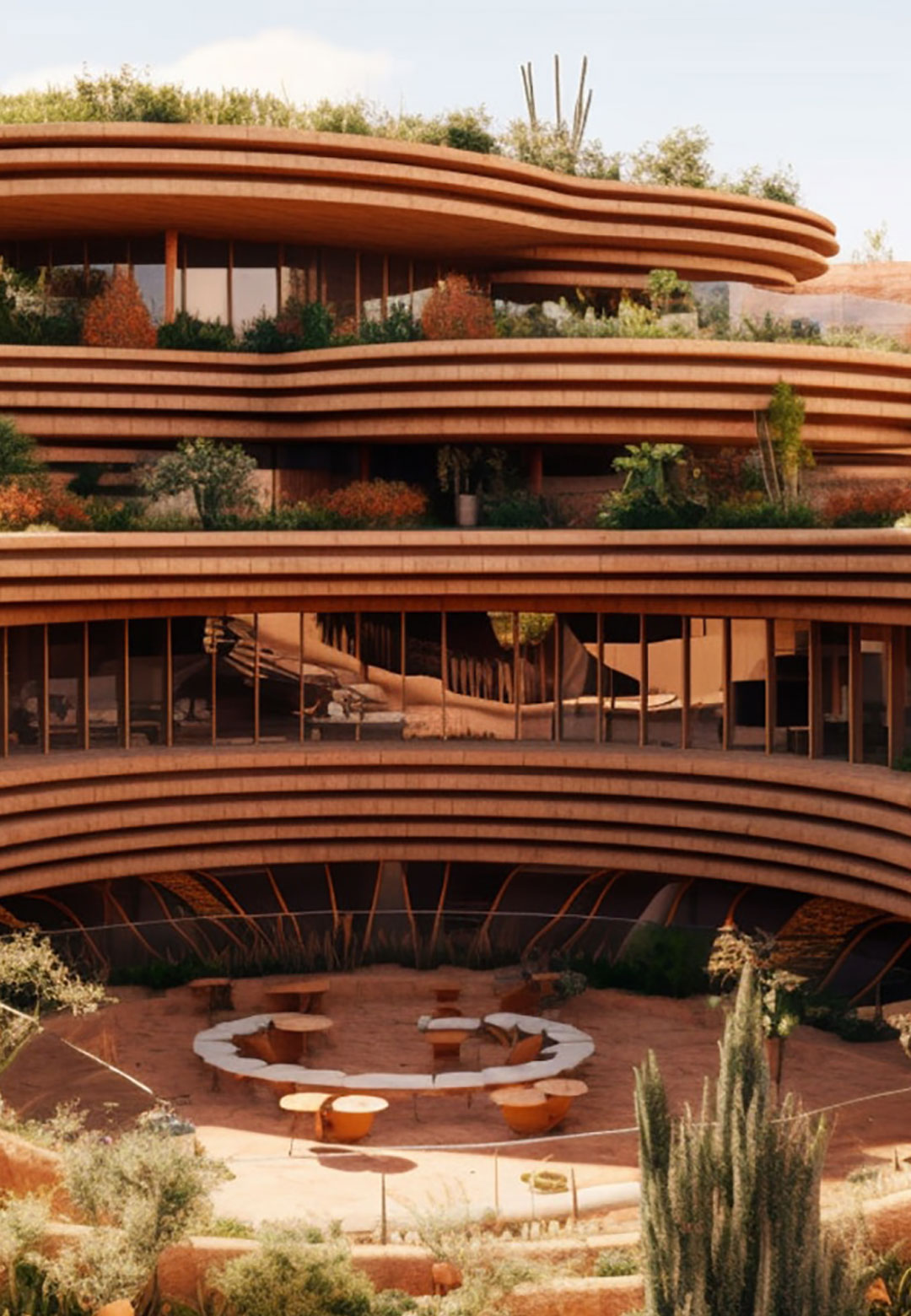Research and design lab SPACE10 announced the winners from their first-ever global design competition to reimagine homes using artificial intelligence (AI). With over 250 entries from around the world, a panel of 10 globally renowned architects, designers, AI artists, journalists, media experts, and creatives selected four winners. Experience the winning projects showcased at the Design in the Age of AI exhibition at SPACE10 Gallery in Copenhagen, Denmark during the 10th edition of 3daysofdesign from June 7-9, 2023, displaying AI-generated visions of future homes, communities, and cities.
Collaborating with artist duo Wang & Söderström, SPACE10 reimagines design archetypes and materials to create a better world. As an independent research and design lab dedicated to the IKEA brand, SPACE10 explores new opportunities and builds partnerships for a sustainable future. The distinguished jury panel carefully selected the most visionary projects as winners. Discover the intersection of AI and design, and join us in shaping a more harmonious future for the planet and its people.
The jury panel for the Design in the Age of AI exhibition consisted of globally renowned creatives, including Tim Fu, Helen Job, David Basulto, Nick Jeffries, Javier Torner, Mawuena Tendar, Dragon Li, Asuka Kawanabe, Dominique Petit-Frère, and Linus Karlsson. Their collective expertise and insights guided the selection of exceptional projects for recognition and celebration.
“We were elated to have such a large number of entries from four continents and a variety of disciplines. The results truly show the potential of emerging AI tools to allow for new, diverse, and hopeful visions of the future, in a time that requires us to imagine new ways of living. Designing for the Future in Harsh Environments by Kedar Deshpande was awarded the highest overall design award by our jury, exemplifying the potential of human-AI collaboration to envision a resilient, imaginative and accessible way of living that is regenerative by design,” shares Ryan Sherman, Creative & Strategy, SPACE10.
Over the past year, generative AI tools have created the opportunity for millions of people to visualise worlds beyond those we ever thought possible. Part competition, part open-source research, Regenerative Futures encouraged play and imagination to create visual concepts of future homes, communities, and cities, to help address the challenges faced in everyday life.
“The diversity of the applicants is a unique surprise. A group of individuals have been brought together by their shared interest in AI, ranging from all backgrounds, from directors to students, from technologists to product designers. They share the view of AI as a (digital) technology that can bring positive changes to the world. In the face of uncertainties with AI advancements, we need that now more than ever,” says Tim Fu, designer and juror at Zaha Hadid Architects.
OVERALL WINNER
Designing for the Future in Harsh Environments by Kedar Deshpande
“ChatGPT proved valuable in researching regenerative home design within the ecosystem I was designing for, providing insights into the future of utilising natural materials, bio-adaptive architecture, and disaster-resistant design. These were used as seeds to envision structures within Midjourney,” explains the overall competition winner Kedar Deshpande, an experience designer, based in the United States.
Designing for the Future in Harsh Environments is a resilient home concept. It combines locally-sourced materials such as sand and clay with natural fibres to create biocomposite materials that provide insulation and are suitable for modular construction. The dwelling achieves off-grid energy independence by integrating solar, hydrogen-generating gardens, and piezoelectric devices into the home’s structural components.
“The proposal creates harmony between design and environment, incorporating the semi-arid characteristics to build an integrated architecture that protects against extreme temperatures and preserves ecosystems,” shares jury member Javier Torner, Global Solutions Division, UN-Habitat.
FINALISTS
Resilient Futures - Plant Pods by Branden Collins
Plant Pods is a proposal by Branden Collins, an interdisciplinary designer from the United States, for a regenerative, inflatable, and wearable home. The exterior of the pod is covered in an algae film that captures solar energy, generating all of the electricity needed to power the home. A rainwater harvesting system collects and filters water for use in the home, or for the wearer on the go. The design prioritises portability and modularity; when not in use as a self-sustaining residential architecture, it acts as a wearable, protective garment. It was designed in collaboration with Midjourney and ChatGPT.
“The author challenges the traditional answers to the housing crisis and puts themselves into a future, where we have to embrace a nomadic style that moves away from extraction and to co-living with nature. A radical new way of living is imagined, and the prompt visualises something that couldn’t be fabricated today, but seems plausible, and hopeful,” commented jury member David Basulto, founder and director of ArchDaily.
Symbiotic Futures - WombHome: Decolonizing Nature by Takbir Fatima
Designed in collaboration with Midjourney and ChatGPT, ‘WombHome’ by architect and interior designer Abeer Fatima from India revolves around the concept that Decolonizing Nature is a symbiotic neighbourhood and community where humans and nature thrive.
Instead of artificial construction systems that cannot be recycled, WombHome proposes a gentle carving of space within natural structures. This imagined cave provides shelter and safety, without consuming excess energy or creating harmful emissions and construction waste. WombHome is naturally cooled and ventilated, lets in sunshine, and features semi-open courtyards for vegetation to grow and cohabitate with humans.
“The image quality is extremely high and visually stunning. The architecture shows complex spatial relationships and informs a programmatic stance towards communal living. The numerous interiors showcase different configurations and ways of living. Material systems and forms break (free) from the traditional architecture we see,” shares jury member Fu.
Collective Futures - City After the Flood by Gustavo Jimenez
City After the Flood by Gustavo Jimenez, an architect from Spain, is an alternative, symbiotic, and densified vision of collective living. These post-flood cities would be built using materials extracted from buildings and homes wrecked by flooding. A waste management network would recover and categorise materials, reducing the environmental contamination. Plans would be made to relocate and rebuild historic buildings, alongside ways to reuse damaged structures. New wooden infrastructures would be built with few supports to keep the land free and reduce impact.
“The only urban project to show a creative material system that merges biomaterial usage with form and assembly that is outside the box. Images feature similar visual language that creates a cohesive project,” explains jury member Fu.
The Design in the Age of AI exhibition at SPACE10 Gallery showcased the winners of the global AI design competition, projects that highlight the power of generative AI tools to address future challenges and inspire sustainable, imaginative, and harmonious living. The design exhibition invites us to shape a better world by embracing AI's potential in design and creating a future that is inclusive and visually stunning.






 Sign in with email
Sign in with email










What do you think?